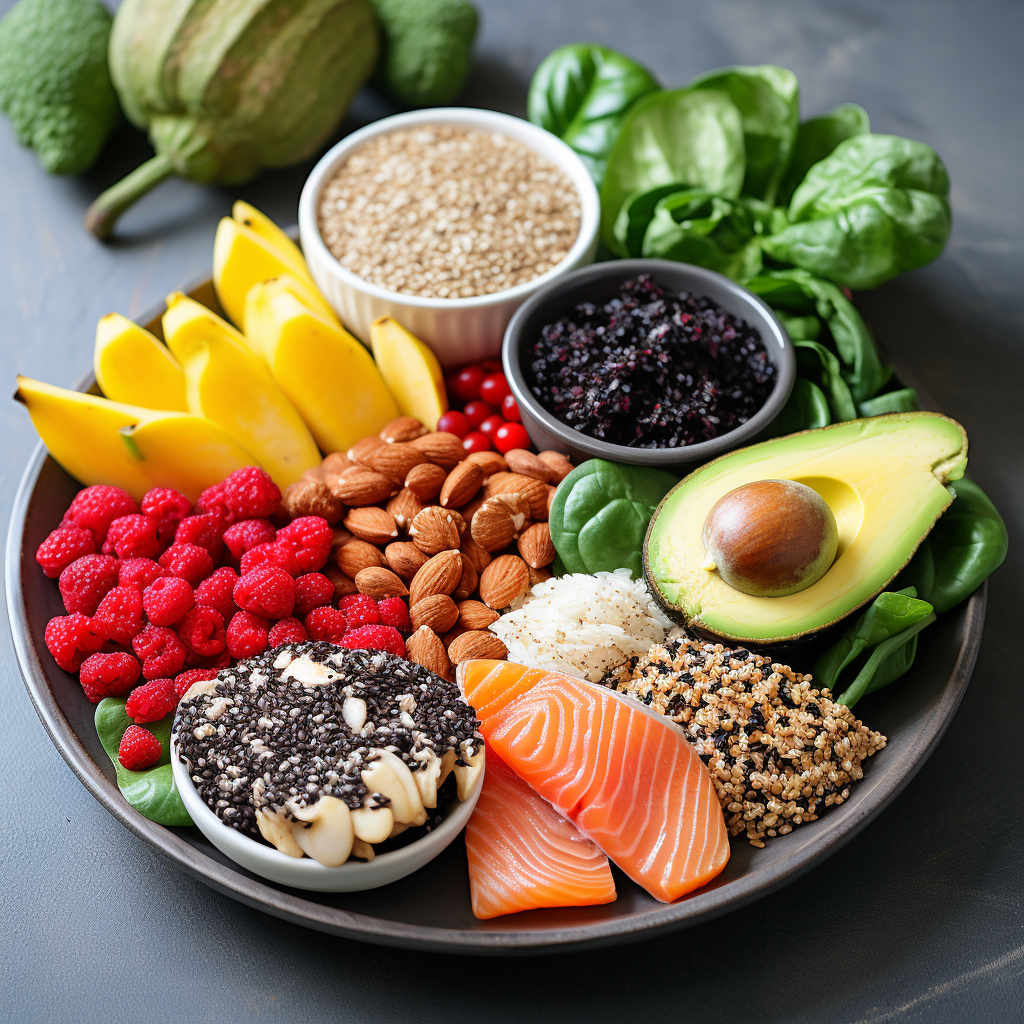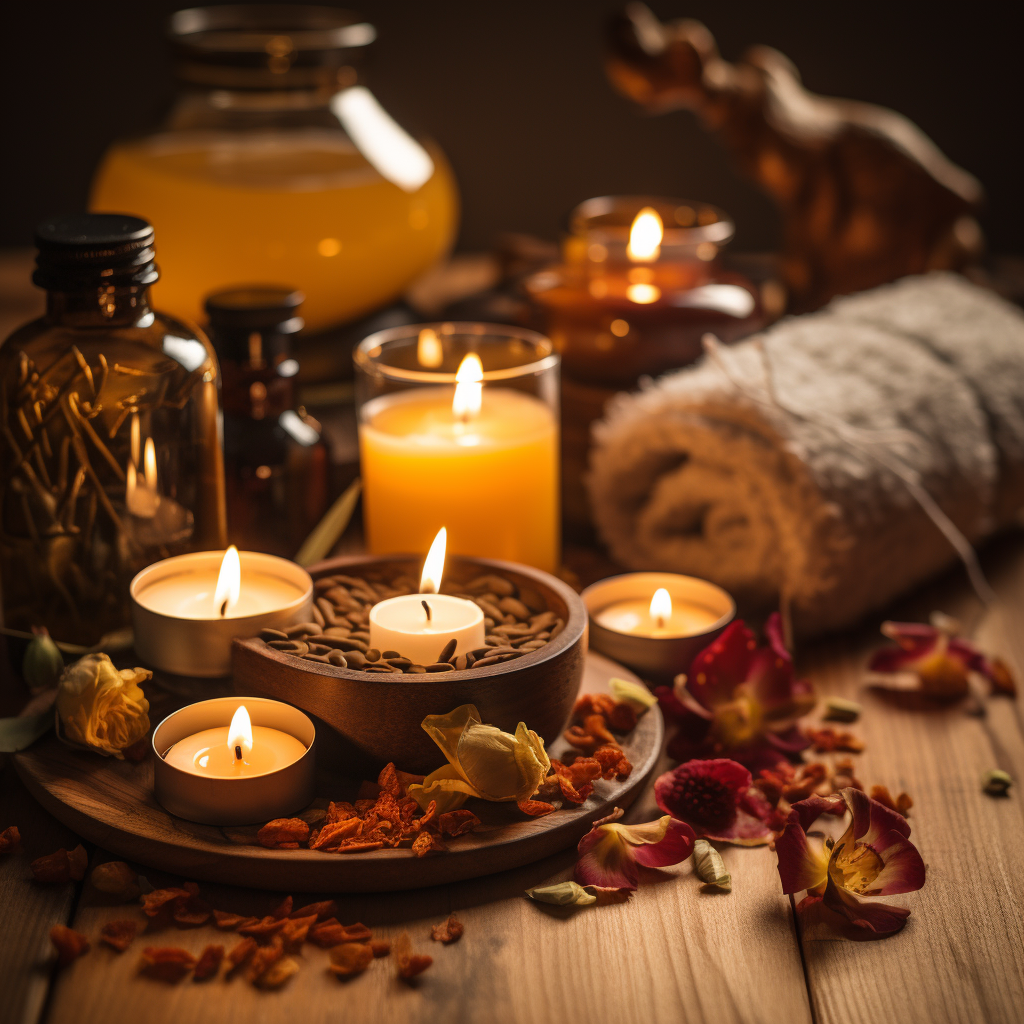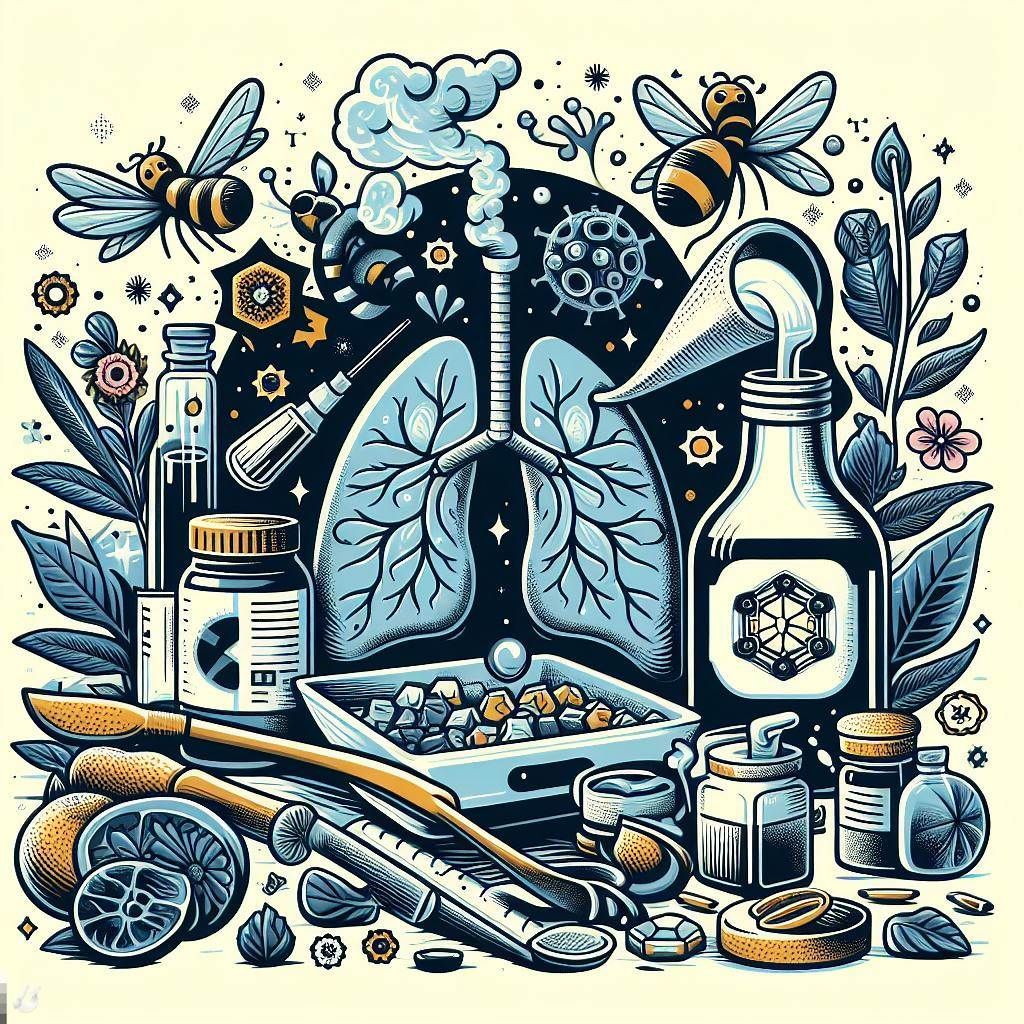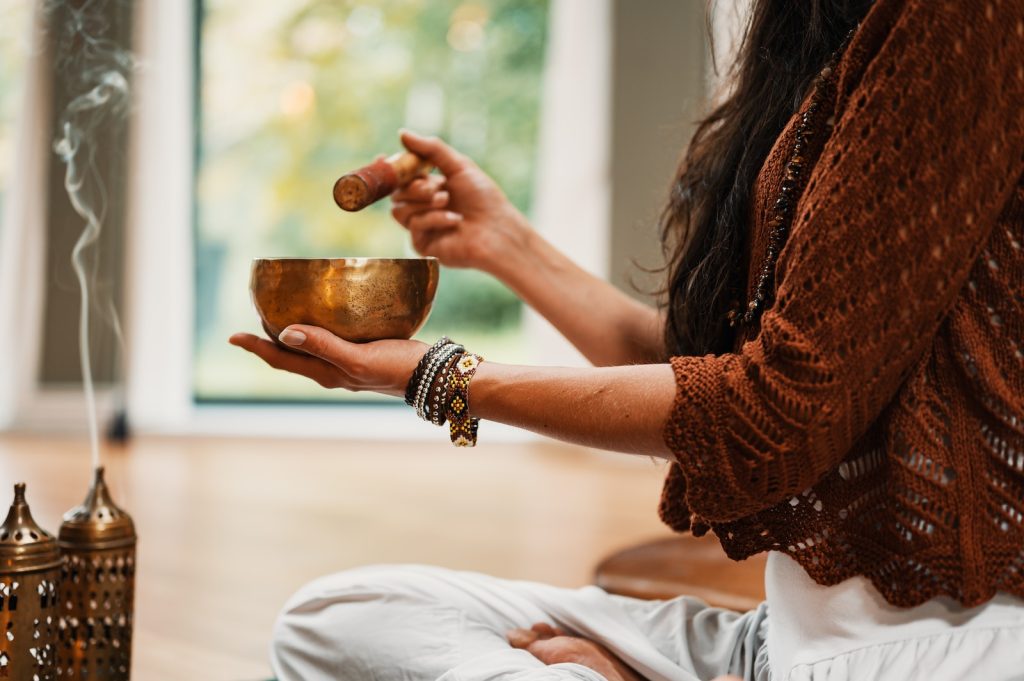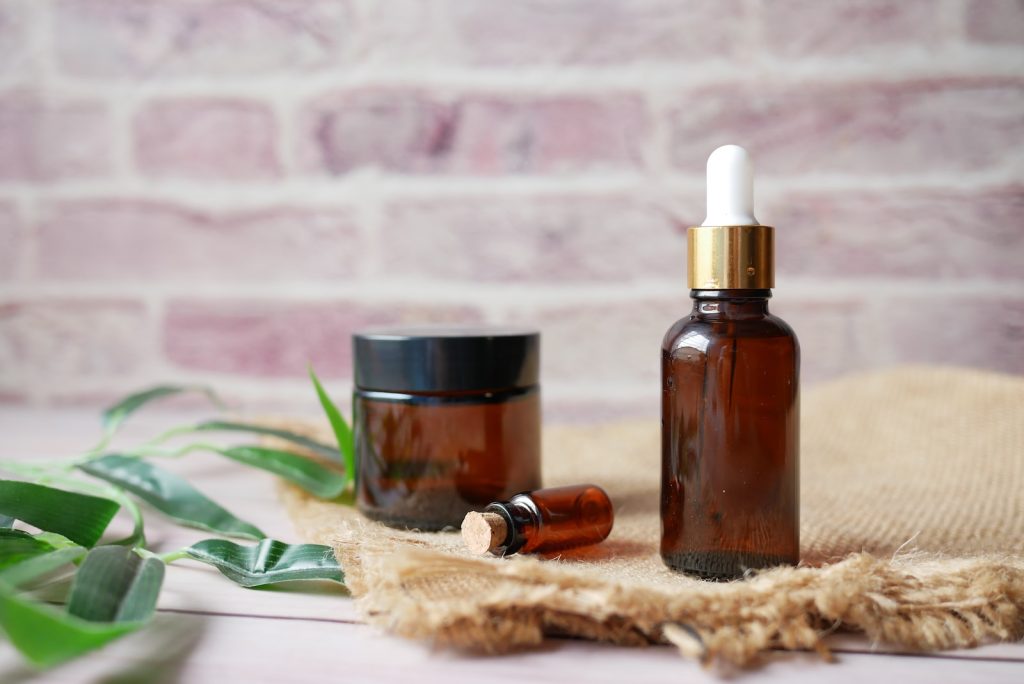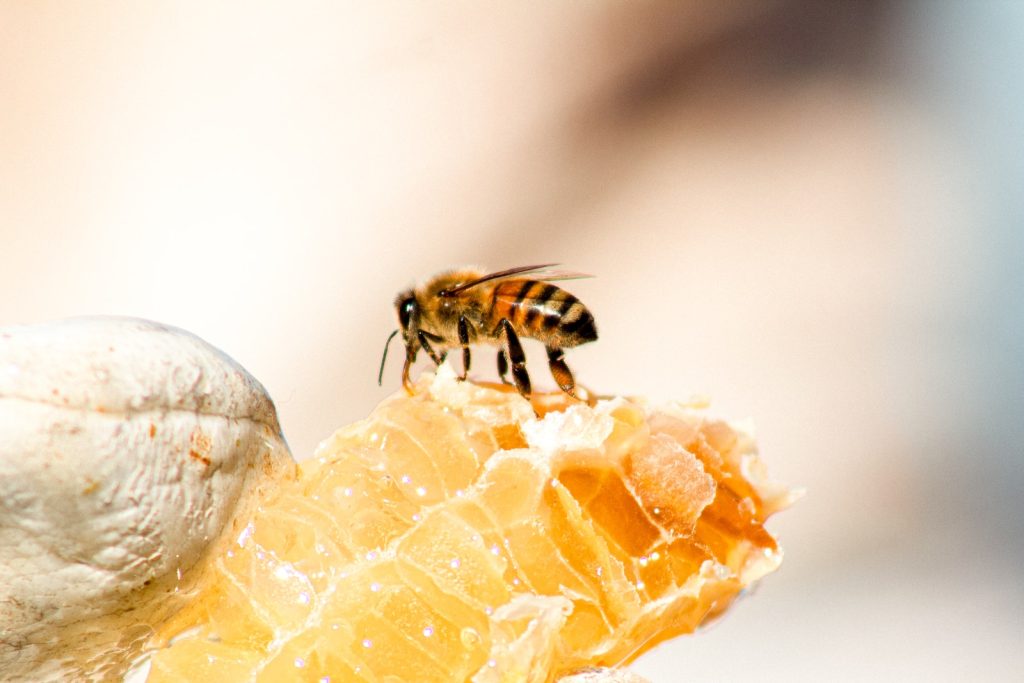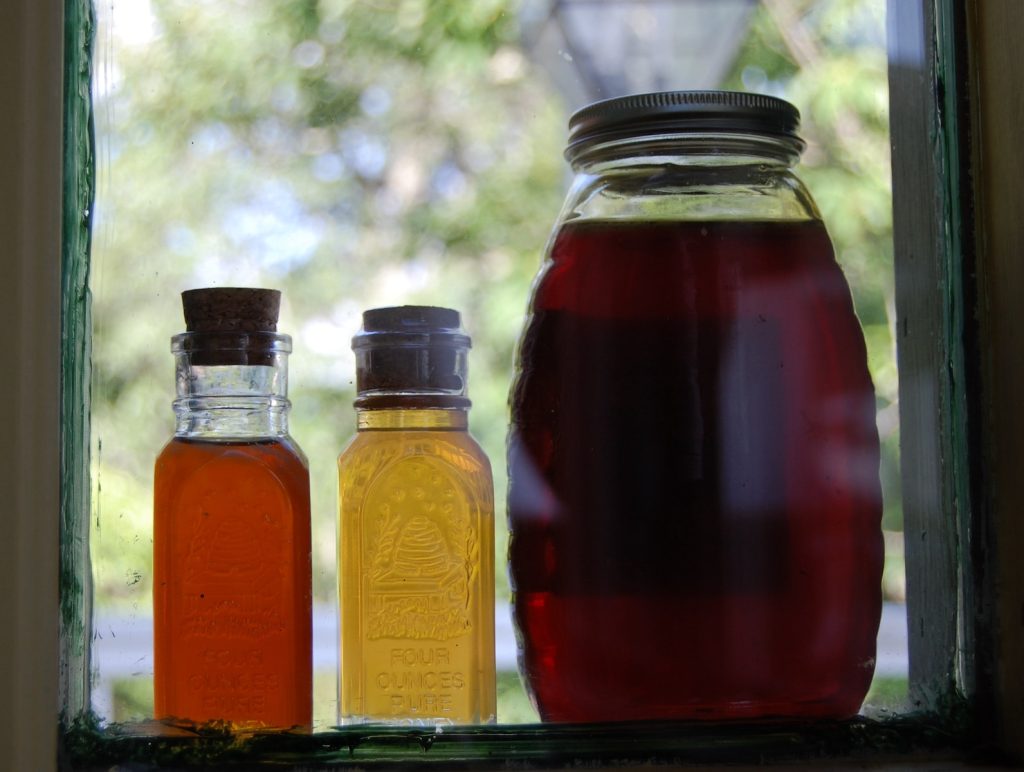
by Elizabeth Redd | Feb 15, 2024 | Holistic Living, Mindfulness, Natural Remedies
The concept of the holistic way is not confined to a single country or culture. Embracing a holistic approach to health means recognizing that our well-being is influenced by the interconnection between our physical, mental, emotional, and spiritual states. This approach transcends geographical boundaries and can be traced back to ancient civilizations across the globe. From the Ayurvedic traditions of India to the indigenous healing practices of Native Americans, the holistic way has been a fundamental aspect of various cultures’ approach to health and wellness.
For instance, Traditional Chinese Medicine (TCM) with its deep roots in China, emphasizes the balance of Qi, the vital life force, as essential for good health. Similarly, the Greek philosophy of balancing the four humors influenced European medical practices for centuries. In Africa, traditional healers have long used herbs and spiritual rituals to treat the whole person. These diverse practices, although varying in methodology and philosophy, all share a common thread – the belief that health is a state of complete harmony and not merely the absence of disease.
As we delve into the holistic way from which country it originated, it becomes clear that this is not a concept owned by one nation but rather a collective wisdom shared by many. It’s a testament to the interconnectedness of human knowledge and the universal desire for harmony and balance in life.
Ready to kickstart your wellness journey? Sign up for our content to receive exclusive tips and updates. Take the first step towards a healthier, happier you! Join Our Community Today!
Tracing Holistic Health: Ancient Civilizations and Practices
The holistic way of health can be traced back to several ancient civilizations that laid the groundwork for today’s holistic practices. In India, Ayurveda, which literally translates to ‘the science of life,’ began over 5,000 years ago and is still practiced today. It is based on the belief that health and wellness depend on a delicate balance between the mind, body, and spirit, and it employs natural treatments, diet, exercise, and lifestyle changes.
In China, Traditional Chinese Medicine (TCM) developed around 3,000 years ago and incorporates herbal medicine, acupuncture, and tai chi to maintain harmony within the body and with the outside world. The concept of Yin and Yang – opposing forces that are interconnected and interdependent – is central to TCM’s understanding of health.
Similarly, ancient Egyptians are known for their use of herbal medicine and spiritual healing, often invoking deities in their quest for health. The Greeks, led by figures such as Hippocrates, often referred to as the ‘Father of Medicine,’ also emphasized the importance of environmental factors and balanced diets to prevent and cure diseases.
Across the Atlantic, Native American healing practices are deeply rooted in a spiritual understanding of life and the belief in a strong connection between health and harmony with nature. These practices often involve herbal remedies, purification rituals, and the guidance of healers known as shamans.
Each of these ancient systems reflects a deep understanding of the holistic way, recognizing that our health is affected by more than just physical symptoms. They highlight the importance of balance and integration in the pursuit of health and wellness, principles that are still relevant and revered in holistic health circles today.
The Birthplace of Holistic Medicine: Uncovering the Origins

Uncovering the birthplace of holistic medicine is akin to a journey through time and across cultures. While it is challenging to pinpoint a single origin due to the parallel development of holistic practices globally, many agree that the holistic way from which country question often leads us to the ancient subcontinent of India. Here, Ayurveda, the earliest formal system embodying the principles of holistic health, was conceptualized. The Vedas, ancient Indian texts, contain some of the first recorded notions of holistic health, emphasizing the interconnectedness of the body, mind, and spirit.
However, holistic medicine’s roots are not confined to a single region. In various forms, it has been an integral part of many indigenous cultures, from the Aboriginal peoples of Australia who engaged in spiritual healing practices to the African tribes that used traditional herbal remedies and community healing rituals.
The traditional Greek philosophy of balancing the ‘four humors’ also reflects holistic principles, suggesting that maintaining the right balance of blood, phlegm, black bile, and yellow bile is essential for good health. This belief permeated throughout the Mediterranean and influenced the development of Western medicine.
Historically, these disparate practices were not known as ‘holistic medicine’ per se, but they all shared a common understanding of treating the individual as a whole rather than focusing solely on the disease. It is this foundational belief that has carried through the ages, leading to the contemporary holistic health movement that integrates traditional wisdom with modern knowledge to promote healing and wellness.
Cross-Cultural Contributions to Holistic Health

The tapestry of holistic health is rich with the threads of numerous traditions and practices from around the world, each contributing its own unique patterns to the form we know today. It is a practice that transcends borders and eras, weaving together the wisdom of countless cultures in pursuit of complete well-being.
From the Native American healing rituals that emphasize a deep connection with nature and spirit, to the Chinese philosophy of balancing the body’s Qi through acupuncture and Tai Chi, holistic health is a true mosaic of global insights. The Chinese contribution, Traditional Chinese Medicine (TCM), is one of the most well-known systems, with its fundamental belief in the Yin and Yang energies and the five elements that govern the human body and its environment.
In the Middle East, Unani medicine, a system based on the teachings of Hippocrates and Galen, flourished. It, too, focuses on the balance of elements within the body and uses natural remedies, such as herbs and minerals, to treat patients holistically.
In Europe, during the Renaissance, a renewed interest in ancient Greek and Roman medical texts led to the integration of holistic concepts with emerging scientific thought. The holistic approach was overshadowed somewhat by the rise of allopathic medicine during the 19th century, but it never disappeared. In fact, it continued to be practiced and evolved alongside conventional methods.
Furthermore, the African continent’s contribution through its myriad of tribal healing traditions, which include spiritual healing, herbalism, and community-based practices, reminds us that holistic health is as diverse as it is ancient.
Understanding these cross-cultural contributions is essential. They not only provide historical context but also offer a variety of tools and perspectives that can be integrated into modern holistic practices, allowing for a more inclusive and comprehensive approach to health and healing.
Modern Holistic Movements: Global Synthesis and Evolution

The evolution of holistic health continues to flourish in the modern era, with a global synthesis of traditional practices and contemporary scientific understanding. As the world becomes more interconnected, the exchange of knowledge accelerates, allowing for an unprecedented integration of ancient wisdom and innovative health modalities.
In recent decades, there has been a significant resurgence in the demand for holistic approaches to health and wellness. This has been driven by a growing dissatisfaction with the limitations of conventional medicine, particularly its focus on symptom management rather than addressing the root causes of illness. In response, modern holistic movements are increasingly embracing a more integrated approach that considers the physical, emotional, mental, and spiritual aspects of an individual.
Yoga and meditation have seen a meteoric rise in popularity across the Western world, with their roots in ancient Indian philosophy. Mindfulness practices, which have origins in Buddhist traditions, have been widely adopted in psychological therapies to help manage stress and improve mental health outcomes.
Naturopathy, which combines natural remedies with modern diagnostics, is another example of how traditional and modern practices are being synthesized. Similarly, functional medicine, a systems biology-based approach that aims to identify and address the root causes of disease, exemplifies the modern holistic movement’s drive towards a more patient-centered and preventative approach to health care.
The surge in popularity of organic foods, the use of essential oils, and the resurgence of interest in herbal remedies all signal a collective shift towards embracing a more holistic way of living. This modern holistic movement is not just a return to ancient practices, but an evolution that adapts and integrates these traditions with contemporary life, creating a more balanced and sustainable approach to health that is accessible to people across the globe.
Holistic Health Today: A Blend of Traditions and Innovations

Today’s holistic health landscape is a vibrant tapestry woven from the various threads of traditional practices and cutting-edge innovations. As societies progress and healthcare evolves, the holistic approach adapts, forming a unique blend that is both timeless and timely.
The holistic way is now characterized by its inclusivity and diversity, embracing techniques from across the world. Acupuncture and traditional Chinese medicine, Ayurveda, Reiki, and countless other practices coexist with modern nutritional science, biofeedback, and genomics. This confluence is evidence of a collective yearning for a more comprehensive, personalized form of healthcare—one that empowers individuals to take charge of their wellbeing and promotes balance in all facets of life.
Technological advancements have played a significant role in this evolution. Wearable health devices, fitness trackers, and mobile health apps provide data that can be used to tailor wellness regimens to the individual’s unique needs. Likewise, telemedicine and online wellness platforms offer greater access to holistic health resources, making it possible for anyone with an internet connection to learn about and implement holistic practices.
As we witness the continuous blending of traditions with innovations, it becomes clear that the holistic way is not static; it is a living, breathing philosophy that grows and changes to meet the needs of each new generation. It is a journey of self-discovery and healing, one that invites us to explore the depths of our being and the breadth of the world’s healing modalities.
Ready to kickstart your wellness journey? Sign up for our content to receive exclusive tips and updates. Take the first step towards a healthier, happier you! Join Our Community Today.!

by Elizabeth Redd | Feb 15, 2024 | Holistic Living, Mindfulness, Natural Remedies
Embarking on a journey toward holistic health can be both enlightening and empowering. Alternative medicine, a term that encompasses a myriad of non-conventional healing practices, aims to treat the whole person – mind, body, and spirit. Unlike traditional medicine, which often focuses on alleviating symptoms, alternative medicine seeks to address the root causes of health issues, fostering a deep sense of well-being and balance.
From acupuncture and aromatherapy to herbal remedies and mindfulness meditation, alternative medicine practices offer a diverse range of options for those seeking a more integrative approach to health care. These practices often draw on ancient wisdom and may be used alongside conventional treatments to enhance overall health. For many, finding “alternative medicine practices near me” is a critical step towards embracing a lifestyle that prioritizes natural and preventative care.
Ready to kickstart your wellness journey? Sign up for our content to receive exclusive tips and updates. Take the first step towards a healthier, happier you! Join Our Community Today.!
As people increasingly recognize the interconnectedness of their physical, emotional, and spiritual health, the demand for alternative medicine continues to grow. By exploring these practices, individuals can discover personalized paths to healing that resonate with their unique needs and philosophies. It’s a transformative process that not only helps to alleviate ailments but also enhances one’s capacity for joy, energy, and resilience.
Key Benefits of Alternative Medicine Therapies

Alternative medicine therapies offer a myriad of benefits that contribute to a person’s overall well-being and can be a pivotal aspect of a holistic health regime. One significant advantage is the emphasis on prevention and the maintenance of health rather than merely treating disease. By focusing on lifestyle changes, nutrition, and stress reduction, these therapies can help to prevent illness from occurring or reoccurring.
Another key benefit lies in the personalized care that practitioners of alternative medicine provide. Treatments are often customized to the individual, taking into account not just their symptoms but also their lifestyle, emotional state, and overall health. This tailored approach ensures that the therapy aligns with the patient’s unique health needs and personal wellness goals.
Many alternative therapies also promote self-empowerment. Patients are encouraged to take an active role in their healing process, learning techniques and strategies to improve their health that they can use throughout their lives. This enhances self-awareness and gives individuals the tools they need to take control of their well-being.
Furthermore, alternative medicine often offers fewer side effects than conventional medicine. Natural remedies and holistic treatments are generally less invasive and use substances that are closer to their natural state, which the body is more likely to tolerate well.
Lastly, the integration of mind, body, and spirit in therapy sessions can lead to improved mental health. Techniques such as meditation, yoga, and tai chi can reduce stress and anxiety, leading to better sleep, more energy, and a more positive outlook on life. By addressing the mental and emotional aspects of health, alternative medicine can contribute to a happier and more balanced life.
Discovering Local Alternative Medicine Practitioners

Discovering local alternative medicine practitioners can be a transformative step in your journey towards holistic health. A great starting point is to conduct an online search for ‘alternative medicine practices near me’, which can yield immediate results tailored to your geographic location. Utilize search engines and dedicated directories that focus on holistic health to find a list of nearby providers.
Another effective method is to ask for recommendations from friends, family, or healthcare professionals who understand your health philosophy and may know reputable practitioners. Personal referrals can provide invaluable insights into the quality of care and the effectiveness of treatments offered by these professionals.
Social media platforms and local online forums are also excellent resources. Many practitioners maintain an active presence online, sharing information about their services, client testimonials, and educational content. Engaging with these pages can give you a sense of the practitioner’s expertise and approach to care.
Once you have a list of potential practitioners, it’s essential to research their credentials, experience, and reviews. Look for practitioners with proper certifications and training in their specific area of alternative medicine. Reading reviews and testimonials can help gauge the satisfaction of their current and past clients.
Before making a final decision, consider scheduling a consultation to discuss your health concerns and goals. This meeting is crucial for understanding the practitioner’s approach and determining if it aligns with your values and expectations. A face-to-face interaction can also help build trust and rapport, which are fundamental for a successful therapeutic relationship.
Types of Alternative Medicine Modalities Nearby
Exploring the types of alternative medicine modalities nearby can offer a myriad of options for individuals seeking to complement or replace conventional treatments. One common modality is acupuncture, an ancient Chinese practice that involves inserting thin needles into specific points on the body to restore balance and promote healing.
Naturopathy, another prevalent form of alternative medicine, emphasizes the body’s innate ability to heal itself. Naturopathic practitioners often use a variety of therapies such as nutritional counseling, herbal medicine, and homeopathy to treat patients.
Chiropractic care focuses on diagnosing and treating musculoskeletal problems, primarily through manual adjustment or manipulation of the spine. It is widely used to alleviate back pain, neck pain, and headaches.
For those seeking a more mind-body oriented approach, yoga and meditation classes can be found in most local wellness centers. These practices are designed to improve flexibility, strength, and mental clarity through poses and mindful breathing exercises.
Another holistic modality gaining popularity is energy healing, which includes practices like Reiki or qigong. These therapies are based on the concept of manipulating the body’s energy flow to promote healing and well-being.
When searching for ‘alternative medicine practices near me,’ it’s important to consider which type of modality aligns best with your personal health goals and preferences. Each practice offers unique benefits, and some may be more suited to your needs than others. Researching and experiencing different modalities can be a rewarding process as you discover what works best for your mind, body, and spirit.
Evaluating and Choosing the Right Practitioner

Selecting the right practitioner is a crucial step in your alternative medicine journey. It is essential to evaluate the credentials and experience of any potential practitioner. Look for certifications or licenses in their specific modality, which indicate that they have undergone the necessary training to provide safe and effective care.
One should also consider the practitioner’s approach to treatment. A good practitioner will view you as a whole person, not just a set of symptoms to be treated. They should be willing to work with you to develop a personalized treatment plan that aligns with your health goals and preferences.
It’s also beneficial to read reviews and testimonials from other patients. These can provide valuable insights into the practitioner’s style, effectiveness, and how they interact with clients. Personal recommendations from friends or family members who have had a positive experience can also be incredibly helpful.
Don’t hesitate to schedule a consultation with the practitioner to discuss your health concerns and ask any questions you may have. This meeting can give you a sense of their expertise and whether you feel comfortable with their approach. Trust your intuition; it’s important that you feel at ease and have confidence in your practitioner’s ability to assist you on your path to wellness.
Lastly, consider the location and availability of the practitioner. While finding ‘alternative medicine practices near me’ is convenient, it’s also worth traveling a bit further if it means connecting with a practitioner who is better suited to your needs. Ensure that their office hours are compatible with your schedule to maintain consistency in your treatment plan.
Integrating Alternative Therapies into Your Wellness Routine

Embarking on a path toward holistic health can be a transformative experience when you integrate alternative therapies into your wellness routine. Begin by identifying which practices resonate with you, whether it be acupuncture, herbal medicine, massage therapy, or another modality. It’s important to listen to your body and choose therapies that align with your personal health philosophies and goals.
Once you’ve selected a therapy to explore, start small. Integrate it into your routine in a way that is manageable and sustainable. For instance, you might begin with bi-weekly yoga classes or monthly visits to a naturopath. Gradually, as you become more accustomed to these practices and their effects on your body, you can adjust the frequency and variety of your alternative therapy sessions.
It’s also key to monitor how you feel before, during, and after each session. Keeping a wellness journal can help you track your progress and notice any changes in your physical or emotional well-being. This self-awareness can guide you in making informed decisions about continuing or adjusting your alternative therapy practices.
Remember that integrating alternative therapies is not about seeking an instantaneous cure but rather about nurturing a deep, ongoing connection with your health. As you explore different modalities, embrace the journey of learning what brings your body and mind into harmony.
Are you ready to kickstart your wellness journey? Join Our Community Today! Sign up for our content to receive exclusive tips and updates. Take the first step towards a healthier, happier you!
Finally, consider how alternative therapies can complement conventional medical treatments. Discuss your alternative therapy plans with your healthcare provider to ensure a coordinated approach to your health. With a balanced integration of alternative therapies, you can create a robust wellness routine that supports your journey to optimal health and happiness.

by Health And Healing AI | Jan 6, 2024 | Natural Remedies
Discover quick and effective ways to manage your cough, ensuring your day remains productive and comfortable.

A serene winter landscape with snow-covered trees and mountains in the background.
The Surprising Impact of Daily Habits on Your Cough
Elizabeth Redd is the news curator for Health and Healing AI. Today, I want to share an article that I found very helpful and informative.
It’s from Health News and about the best home remedies to treat your cough naturally.
I don’t know about you, but I hate having a cough. It’s annoying, uncomfortable, and sometimes embarrassing.
That’s why I was so glad to discover this article, which offers some easy and effective ways to soothe your throat and lungs with natural ingredients.
You’ll learn how to use honey, ginger, lemon, garlic, and more to make your cough remedies at home.
Trust me, you’ll be amazed by how much better you’ll feel after trying these tips.
Main Points

Patient-listen-to-doctor-on-cough-relief-advice.
What causes a cough and when to see a doctor
- A cough is a natural reflex that helps clear the airways of mucus, irritants, or infections.
- A cough can be acute (lasting less than three weeks) or chronic (lasting more than eight weeks).
- Various factors, such as allergies, asthma, bronchitis, pneumonia, smoking, or COVID-19, can cause a cough.
- A cough can be dry (without mucus) or productive (with mucus).
- Other symptoms, such as fever, sore throat, chest pain, or shortness of breath, can accompany a cough.
- A cough can be treated with over-the-counter or prescription medications, depending on the cause and severity.
- A cough can also be relieved with natural remedies, which are the focus of this article.
- A cough that is persistent, severe, or has blood or green or yellow mucus should checked by a doctor.
The best home remedies to treat your cough naturally
- The article lists 12 natural remedies to help soothe your cough and boost your immune system. They are:
- Honey: A natural antibacterial and anti-inflammatory agent that can coat the throat and reduce coughing. Mix with warm water, lemon, ginger, or cinnamon.
- Ginger: A natural anti-inflammatory and antiviral agent that can ease a dry or asthmatic cough. Add it to tea, honey, hot water, or chewed raw.
- Lemon is A natural source of vitamin C and antioxidants that fight infections and reduce inflammation. Squeeze lemons into warm water, honey, or tea, or use them as a gargle.
- Garlic is a natural antibiotic and antifungal agent that kills bacteria and fungi that cause coughs. It can be eaten raw, cooked, or added to honey or tea.
- Turmeric: A natural anti-inflammatory and antiseptic agent that can heal the throat and lungs. Mix it with milk, honey, or water, or use it as a gargle.
- Saltwater: This natural disinfectant and decongestant can clear the mucus and soothe the throat. It can be used as a gargle several times a day.
- Steam: A natural way to moisten the airways and loosen the mucus. It can be inhaled from a bowl of hot water, a shower, or a humidifier, with or without adding essential oils, such as eucalyptus, peppermint, or lavender.
- Thyme: A natural expectorant and antispasmodic agent that can help expel the mucus and relax the muscles of the respiratory tract. It can be brewed into tea, added to honey, or used as a gargle.
- Licorice root Is a natural demulcent and anti-inflammatory agent that can coat the throat and reduce irritation. It can be brewed into tea, chewed, or taken as a supplement.
- Marshmallow root is a natural mucilage and anti-inflammatory agent that soothes the throat and eases the cough. It can be brewed into tea, taken as a syrup, or used as a tablet.
- Slippery elm is a natural mucilage and antioxidant agent that protects the throat and reduces inflammation. It can be brewed into tea, taken as a syrup, or used as a tablet.
- Pineapple: A natural source of bromelain, an enzyme that can break down the mucus and reduce coughing. Eat fresh, juiced, or taken as a supplement.
The precautions and tips to use home remedies safely and effectively
- The article advises you to consult a doctor before using any home remedies, especially if you have a chronic condition, are pregnant or breastfeeding, or are taking any medications.
- The article warns to avoid giving honey to children under one year of age, as it can cause botulism, a rare but severe form of food poisoning.
- The article suggests testing the home remedies on a small skin area first to check for allergic reactions, such as rash, itching, or swelling.
- The article recommends using organic, raw, unfiltered honey, ginger, lemon, garlic, turmeric, and pineapple, as they have more nutrients and fewer additives than processed ones.
- The article advises plenty of fluids, such as water, herbal teas, soups, or broths, to stay hydrated and thin the mucus.
- The article encourages avoiding or limiting the intake of caffeine, alcohol, dairy products, and sugar, as they can dehydrate, irritate, or thicken the mucus.
- The article reminds us to practice good hygiene, such as washing our hands, covering our mouth and nose when coughing or sneezing, and disposing of used tissues to prevent the spread of germs.
- The article urges you to get enough rest, sleep, and relaxation to help your body heal and recover.
My Biggest Takeaway

Unveiling the Lesser-Known Causes of Persistent Coughing.
The biggest takeaway from this article is that you don’t have to suffer from a cough or rely on expensive or harmful medications.
You can use natural remedies that are readily available, affordable, and effective to treat your cough and improve your health.
These remedies are not only good for your cough but also for your immune system, your digestion, your skin, and your mood.
They are simple, safe, and satisfying to use. So, the next time you cough, don’t hesitate to try these home remedies and see the difference for yourself. You’ll be glad you did.
Alright, here is what I wrote:
Related Articles From Around The Internet

Nutritious-meal-displaying-antioxidants-and-omega-3.
You can check out these articles from different sources to learn more about natural cough remedies.
They offer more tips, insights, and evidence on how to treat your cough naturally and effectively.
This article reviews 12 natural remedies for cough, such as honey, ginger, lemon, garlic, turmeric, salt water, steam, thyme, licorice root, marshmallow root, slippery elm, and pineapple.
It also explains what causes a cough, when to see a doctor, and how to prevent it.
This article provides some home hacks to get rid of a bad cough, such as drinking lots of fluids, swallowing some honey, looking to nature, sipping a hot drink, clearing irritants from your home, sleeping on an incline, and gargling saltwater.
It also tells you the underlying causes of a cough and when to seek medical help.
This article lists 14 natural cough remedies that you can try at home, such as drinking tea with lemon and honey, gargling saltwater, consuming thyme, using an air purifier or humidifier, taking supplements like zinc and vitamin C, applying a warm compress, and eating spicy foods.
It also gives you some advice on how to prevent a cough and when to see a doctor.
This article explores 12 home remedies for cough relief, such as ginger, marshmallow root, peppermint, eucalyptus, honey, lemon, chamomile, anise, ivy leaf, mullein, bromelain, and N-acetylcysteine.
It also discusses the scientific research behind these remedies, their possible side effects, and their interactions with medications.
This article shows some natural cough remedies in a slideshow format, such as honey, ginger, hot fluids, steam, salt water, thyme, licorice root, marshmallow root, slippery elm, pineapple, herbs, and cough drops.
It also explains how these remedies work and how to use them safely and effectively.
Related Books About Home Remedies for Cough You May Be Interested In

Revolutionizing Your Day – Lifestyle Changes to Minimize Coughing. Photo by Vlada Karpovich
Cough Cures: The Complete Guide to the Best Natural Remedies and Over-the-Counter Drugs for Acute and Chronic Coughs
This book bridges the gap between conventional and holistic medicine and offers natural alternatives for antibiotics, cough syrups, pain and sleeping medications, and antacids.
It also guides the best over-the-counter drugs for different types of coughs. Check this book out on Amazon.
Cough No More: Natural Cough Remedies for Adults to Soothe and Heal
This book contains natural cough remedies for adults that can help soothe and heal the throat and lungs.
It also explains the causes and types of coughs, the benefits and risks of conventional and alternative treatments, and the prevention and management of coughs. Check this book out on Amazon.
Home Remedies for Cough Relief – The Old Farmer’s Almanac
This book is a collection of natural home remedies for cough relief from The Old Farmer’s Almanac.
It includes tips and recipes for using honey, ginger, lemon, garlic, turmeric, salt water, steam, thyme, licorice root, marshmallow root, slippery elm, and pineapple. Check this book out on Amazon.
This book is a curated list of eight books on natural remedies that have stood the test of time. It covers herbal medicine, aromatherapy, homeopathy, Ayurveda, Chinese medicine, and more.
It also features reviews and recommendations from experts and readers. Check this book out on Amazon.
17 Natural Remedies for Cough, Lung Infections and Bronchitis
This book is a comprehensive guide to natural cough, lung infections, and bronchitis remedies. It covers the causes, symptoms, and complications of these conditions and the best foods, herbs, supplements, and lifestyle changes to treat them.
It also includes recipes and instructions for making your cough remedies at home. Check this book out on Amazon.
This website participates in the Amazon Services LLC Associates Program, an affiliate advertising program designed to provide a means for sites to earn advertising fees by advertising and linking to Amazon.com and affiliated sites. As an Amazon Associate,
I earn from qualifying purchases.
Wrap-UP

Cough Relief: Discovering Quick Fixes for Sudden Outbreaks.
“Don’t Let a Cough Ruin Your Day” is a comprehensive guide dedicated to helping individuals manage and alleviate cough symptoms, ensuring their daily routine remains unaffected.
The main point of this resource is to provide readers with practical advice, home remedies, and professional insights, empowering them to tackle coughs effectively and maintain their productivity and comfort throughout the day.
The article begins by exploring the common causes of coughs, from environmental triggers to underlying health issues, offering a deeper understanding of why coughs occur.
It then delves into various solutions, from over-the-counter medications and natural remedies to lifestyle changes and preventive measures.
Highlights include tips on strengthening the immune system, the benefits of hydration and a balanced diet, and the importance of maintaining good air quality in living spaces.
Additionally, the piece features advice from healthcare professionals, ensuring that the information is practical and medically sound.
The goal is to provide readers with a holistic approach to managing their cough, thereby minimizing its impact on their day-to-day lives.
Call to Action:
“Don’t let your cough overshadow another day. Take charge now! Embrace a healthier, more comfortable life starting today!”
P. S. Still curious about more ways to keep your cough in check? Dive deeper into our extensive resources and expert advice. Discover the secrets to a cough-free life – because you deserve to enjoy every day to its fullest!”

by Health And Healing AI | Dec 14, 2023 | Natural Remedies
Embark on a transformative journey to wellness as we unveil the secrets of unconventional healing.

Finding Balance – Embracing the Unconventional for Optimal Health. Photo by Clemens van Lay
Unveil the Secrets of Unconventional Healing
Unveiling the Secrets of Unconventional Healing: As a child, I watched my grandmother mix herbs in her kitchen, her wisdom etched in every wrinkle.
Decades later, I found myself in a modern city clinic, yet the pills didn’t heal me like her concoctions did.
This journey led me to discover the secrets of unconventional healing.
The results are astounding in a world where ancient knowledge meets modern science. In this article, I’ll share these secrets.
You’ll learn how to harness the power of nature and your own body to heal in ways you never imagined. Today, let’s embark on a health journey beyond the pill bottle.
Unconventional Healing Techniques You Haven’t Tried Yet – Exploring Alternative Paths to Wellness

Nature’s Remedies – The Natural Path to Wellness. Photo by Conscious Design
Exploring Unconventional Healing for Vibrant Health
Unveiling the Secrets of Unconventional Healing: Are you tired of traditional healing methods that don’t work for you? Have you considered trying unconventional healing techniques?
These techniques may seem strange or unfamiliar initially, but they have proven effective for many people.
This article will introduce you to five unconventional healing techniques you may not have tried yet.
The first technique we will discuss is equine therapy. This therapy involves interacting with horses to promote emotional healing and growth.
It can be beneficial for those struggling with mental health issues or trauma. Research has shown that equine therapy can reduce symptoms of anxiety, depression, and PTSD.
If you want to try this therapy, look for a reputable equine therapy center near you.
Another unconventional healing technique is sound therapy. This therapy involves using sound vibrations to promote healing and relaxation.
It can be done with instruments like singing bowls, gongs, tuning forks, or with your voice. Sound therapy has been shown to reduce stress, anxiety, and pain.
If you’re curious about this technique, you can try it by attending a sound bath or finding a sound therapist.
Energy Healing Practices – Secrets of Unconventional Healing
Energy healing practices might be worth exploring if you’re open to alternative healing modalities.
Unveiling the Secrets of Unconventional Healing: Here are two unconventional techniques that you might not have tried yet:
Reiki Energy Work
Reiki is a Japanese healing technique that involves the transfer of energy from the practitioner’s palms to the patient’s body to promote relaxation, reduce pain, and accelerate healing.
It’s based on the idea that an unseen “life force energy” flows through us and is what causes us to be alive.
If one’s life force energy is low, we are more likely to get sick or feel stressed; if it’s high, we are more capable of being happy and healthy.
During a Reiki session, the patient lies down wholly clothed while the practitioner places their hands on or near the patient’s body in a series of hand positions.
The practitioner then channels the energy to the patient, promoting deep relaxation and well-being.
Quantum-Touch Therapy
Unveiling the Secrets of Unconventional Healing: Quantum-Touch Therapy is another energy healing technique that uses hands to amplify and direct the body’s natural healing abilities.
It’s based on the idea that the body can heal but needs help.
During a Quantum-Touch Therapy session, the practitioner uses breathing and body awareness techniques to raise their energy level. T
hey then place their hands on or near the patient’s body, and the energy from the practitioner’s hands is transferred to the patient’s body.
It can help to reduce pain, speed up healing, and improve overall well-being.
Reiki and Quantum Touch Therapy are non-invasive, gentle, and safe techniques that can complement traditional medical treatments.
These two techniques are a great place to start if you’re curious about energy healing practices.
Sound Therapy Techniques _ Unveiling the Secrets of Unconventional Healing
You might want to try sound therapy if you’re looking for a new way to improve your mental and emotional well-being.
This holistic healing technique uses sound vibrations to help reduce stress, anxiety, and other negative emotions.
Here are two sound therapy techniques you might want to consider:
Tibetan Singing Bowls
Tibetan singing bowls have been used for centuries in Tibetan culture as a form of meditation and healing.
These bowls are made of metal and produce a unique sound to help calm your mind and body.
During a Tibetan singing bowl session, the bowls are played in a specific sequence to create a sense of harmony and balance.
The vibrations from the bowls can help reduce stress and anxiety, improve your mood, and promote a sense of well-being.
Binaural Beats Meditation
Binaural beats meditation is a type of meditation that uses sound frequencies to help induce a state of relaxation.
During a binaural beats meditation session, you listen to two different sound frequencies in each ear.
The difference between the two frequencies creates a third frequency in your brain, which can help you relax and reduce stress.
This technique can help improve mood, reduce anxiety, and promote sleep.
Finding a qualified practitioner who can guide you through the process is essential if you want to try sound therapy techniques.
You may also want to consider investing in your Tibetan singing bowl or binaural beats meditation tracks to use at home.
Aromatherapy and Essential Oils

The Road Less Traveled – Unconventional Healing Techniques You Must Explore. Photo by Towfiqu barbhuiya
Unveiling the Secrets of Unconventional Healing: If you’re looking for a natural way to promote wellness, aromatherapy and essential oils are worth considering.
Aromatherapy is using scents to improve physical, emotional, and mental well-being. Essential oils are concentrated plant extracts that are used in aromatherapy.
Here are two ways you can use aromatherapy and essential oils to improve your health:
Emotional Release with Scents
Certain scents can help you feel more relaxed, focused, or energized.
For example, lavender oil is known for its calming properties, while peppermint oil can help improve mental clarity.
You can create a calming atmosphere in your home or office by using essential oils for aromatherapy.
You can also use essential oils during meditation or yoga to help you relax and focus.
Creating Personalized Aromatherapy Blends
One of the benefits of aromatherapy is that you can create personalized blends that meet your specific needs.
For example, if you’re feeling stressed, you can blend lavender, bergamot, and ylang-ylang essential oils to help you relax.
If you’re tired, you can blend peppermint, rosemary, and lemon essential oils to help you feel more energized.
You can experiment with different scents and blends until you find the best ones.
| Essential Oils | Properties |
| Lavender | Calming |
| Peppermint | Mental clarity |
| Bergamot | Uplifting |
| Ylang-ylang | Relaxing |
| Rosemary | Energizing |
| Lemon | Refreshing |
In conclusion, aromatherapy and essential oils are natural and effective ways to promote wellness.
You can create a more balanced and harmonious life by using scents to improve your physical, emotional, and mental well-being.
Movement-Based Therapies

Crystal healing therapy for spiritual and physical balance. Photo by Kristijan Arsov
If you’re looking for unconventional ways to heal your mind and body, you might want to consider movement-based therapies.
These therapies use different types of movements to promote health and wellness, and they can be a great addition to your self-care routine.
Here are two types of movement-based therapies you might want to try:
Qigong for Inner Balance
Qigong is a traditional Chinese practice that involves slow, gentle movements, deep breathing, and meditation.
It’s often described as a moving meditation, and it’s believed to promote balance and harmony in the body and mind.
Qigong has been shown to have many health benefits, including reducing stress, improving balance and flexibility, and boosting the immune system.
To try Qigong, you can find classes at many community centers, yoga studios, and martial arts schools.
You can also find instructional videos online or in books. Qigong is a low-impact practice that suits people of all ages and fitness levels.
Dance Movement Therapy
Dance movement therapy is a form of psychotherapy that uses dance and movement to help people express their emotions and improve their mental health.
It’s based on the idea that the body and mind are interconnected and that movement can be a powerful tool for healing.
In dance movement therapy, you’ll work with a trained therapist to explore your feelings and emotions through movement.
You might be asked to improvise movements or follow specific choreography depending on your needs and goals.
Dance movement therapy is effective for a wide range of mental health issues, including anxiety, depression, and trauma.
If you want to try dance movement therapy, you can find a qualified therapist through the
American Dance Therapy Association or other professional organizations. You can also find classes and workshops at some dance studios and community centers.
Movement-based therapies can be a fun and effective way to improve physical and mental health.
Whether you try Qigong, dance movement therapy, or another type of movement-based therapy, you might be surprised at how much it can help you feel better.
Herbal and Plant Medicine

Vibrant-illustration-of-healing-plants-and-flowers
If you’re seeking unconventional healing techniques, herbal and plant medicine might be the answer.
Many cultures have been using plants for medicinal purposes for centuries. Here are two types of herbal medicine that you might find helpful.
Adaptogenic Herbs for Stress Relief
Unveiling the Secrets of Unconventional Healing: Adaptogenic herbs are a type of herb that can help your body adapt to stress.
They can help reduce anxiety, improve mood, and increase energy levels. Some examples of adaptogenic herbs include ashwagandha, rhodiola, and holy basil.
You can take adaptogenic herbs in various forms, such as teas, capsules, or tinctures. Talking to your doctor before taking any new herbs is essential, especially if you take other medications.
Ayurvedic Herbal Remedies
Ayurvedic medicine is a traditional medicine from India that uses herbal remedies to treat various ailments. Some common Ayurvedic herbs include turmeric, ginger, and ashwagandha.
Ayurvedic herbal remedies are often used to treat digestive, skin, and respiratory issues.
They can be taken in various forms, such as teas, powders, or capsules.
Talking to your doctor before taking any new herbs is essential, especially if you take other medications.
Overall, herbal and plant medicine can be a great way to complement traditional medicine.
However, it’s essential to research and talk to your doctor before trying new herbs or supplements.
Color and Light Therapy

Person-practicing-mindfulness-in-serene-garden.
If you’re looking for unconventional healing techniques, color and light therapy might be just what you need.
This therapy uses colors and light to treat physical and mental health conditions. Here are two types of color and light therapy that you might want to try:
Chromotherapy Sessions
Chromotherapy, or color therapy, is a holistic healing method that uses colors to balance the body’s energy centers or chakras.
Each color is believed to affect the body and mind differently.
For example, blue is calming and soothing, while yellow is believed to be energizing and uplifting.
During a chromotherapy session, you’ll be exposed to different colors of light through colored lamps, filters, or crystals.
You might also be asked to wear colored glasses or lay on a colored mat. The therapist will guide you through the session and explain the meaning of each color.
Bioptron Light Therapy
Bioptron light therapy is a phototherapy that uses polarized light to stimulate the body’s natural healing processes.
The light is emitted through a unique lamp that filters harmful UV rays.
The therapy is non-invasive and painless and can treat various conditions, including pain, inflammation, and skin problems.
During a Bioptron light therapy session, you’ll sit or lie in front of the lamp for some time. The therapist will adjust the intensity and duration of the light based on your needs.
You might also be given a special cream or gel to apply to your skin before the session to enhance the effects of the light.
Color and light therapy might sound unconventional, but they have been used for thousands of years in traditional healing practices.
If you’re curious about these therapies, talk to a qualified practitioner to see if they’re right for you.
Mindfulness and Visualization

Colorful-depiction-of-diverse-healing-practices.
If you’re looking for alternative healing techniques, mindfulness and visualization practices could be the perfect fit.
These techniques can help you stay present and focused and even help you manage stress and anxiety.
Guided Imagery Techniques
Guided imagery is a visualization that involves using your imagination to create a mental image of a specific situation or scenario.
This technique can help you relax, reduce stress, and even manage pain.
To get started with guided imagery, find a quiet place where you won’t be interrupted.
Close your eyes and take a few deep breaths to help you relax. Then, imagine yourself in a peaceful and calming environment, such as a beach or a forest.
Try to use all your senses to create a vivid mental image of the scene.
Mindfulness Meditation Practices
Mindfulness meditation is another technique that can help you stay present and focused.
This technique involves paying attention to your thoughts and feelings without judgment.
To practice mindfulness meditation, find a quiet place where you won’t be interrupted. Sit in a comfortable position and focus on your breath.
Pay attention to each inhale and exhale, and let your thoughts come and go without judgment.
There are many different types of mindfulness meditation practices, so feel free to experiment until you find a technique that works for you.
Some people find it helpful to use guided meditations or mindfulness apps to get started.
Frequently Asked Questions
What are some lesser-known holistic healing techniques?
Holistic healing is an approach that considers the whole person, including their mind, body, and spirit when addressing health issues.
Some lesser-known holistic healing techniques include sound healing, breathwork, and aromatherapy.
Sound healing uses different frequencies and vibrations to help balance the body’s energy.
Breathwork involves breathing exercises that can help reduce stress and promote relaxation. Aromatherapy uses essential oils to promote healing and relaxation.
Can you recommend any unique energy therapy practices?
Energy therapy is an alternative medicine that uses energy to promote healing.
Some unique energy therapy practices include Reiki, acupuncture, and crystal healing. Reiki involves the use of gentle touch to channel energy and promote healing.
Acupuncture involves using needles to stimulate specific points in the body to balance energy.
Crystal healing involves using different crystals to promote healing and balance energy.
What are some effective spiritual healing methods not commonly discussed?
Spiritual healing involves using spiritual practices to promote healing and well-being.
Some effective spiritual healing methods not commonly discussed include shamanic healing, chakra healing, and past life regression.
Shamanic healing involves connecting with the spiritual world to promote healing. Chakra healing involves using different techniques to balance the body’s energy centers.
Past life regression involves exploring past lives to promote healing and self-discovery.
Are there any unconventional courses for learning healing modalities?
Yes, there are many unconventional courses for learning healing modalities. Some examples include online courses, workshops, and retreats.
These courses can cover a variety of healing modalities, including energy healing, herbalism, and meditation.
Researching and finding a course that aligns with your interests and goals is essential.
How can the subconscious mind be involved in alternative healing practices?
The subconscious mind plays a significant role in alternative healing practices.
Hypnotherapy and guided imagery can help access the subconscious mind to promote healing.
Hypnotherapy involves inducing a trance-like state to access the subconscious mind and promote healing.
Guided imagery uses visualization techniques to access the subconscious mind and promote healing.
What natural healing methods are considered the most potent and underutilized?
Some natural healing methods considered the most potent and underutilized include herbal medicine, homeopathy, and Ayurveda.
Herbal medicine involves using plants and herbs to promote healing and well-being.
Homeopathy involves using highly diluted substances to promote healing. Ayurveda is a traditional Indian system of medicine that uses a holistic approach to promote health and well-being.
These natural healing methods can be highly effective, but it’s essential to consult a qualified practitioner before using them.
Wrap-Up

Unlocking the Power of Mind-Body Connection in Healing. Photo by NoName_13
“Beyond Traditional Medicine: Unveiling the Secrets of Unconventional Healing” takes readers on a transformative journey into the realm of alternative and holistic approaches to wellness.
This illuminating exploration goes beyond conventional medical practices, unveiling the hidden gems of unconventional healing techniques that have the potential to revolutionize one’s well-being.
In this captivating journey, you will discover the power of ancient wisdom, holistic therapies, and mind-body connections that form the foundation of unconventional healing.
We delve into practices like acupuncture, herbal remedies, energy healing, and more, offering insights into how these methods can enhance your vitality and overall health.
By embracing these unconventional healing secrets, you’ll gain a deeper understanding of the harmony between the body, mind, and spirit, paving the way for a life of wellness and balance.
Join us on this enlightening path as we uncover the untapped potential of unconventional healing, transcending the boundaries of traditional medicine to reveal a world of health and vitality you never knew existed.
A Call to Action
“Ready to embark on your journey to holistic wellness? Start exploring the secrets of unconventional healing today.
Join us in embracing ancient wisdom and unlocking the pathways to optimal health. Don’t wait – take the first step towards a more vibrant and balanced life now.”
P. S. “Remember, your well-being is your most valuable asset. Discover the transformative power of unconventional healing methods and watch as your life unfolds with newfound vitality and harmony. Take that leap into a healthier you today!”

by Health And Healing AI | Oct 12, 2023 | Health, Natural Remedies
What You Don’t Know About Buckwheat Honey and the Bible

Biblical evidence supports the health benefits of buckwheat honey. Photo by Meggyn Pomerleau
Buckwheat honey is a honey produced by bees that feed primarily on buckwheat flowers.
This honey has a dark color and a robust and distinctive flavor that sets it apart from other types of honey.
Buckwheat honey has been used for centuries for its medicinal properties, and it is still popular today for its many health benefits.
As someone interested in natural remedies and alternative medicine, I have always been fascinated by the health benefits of buckwheat honey.
I recently came across some information that suggests that buckwheat honey may have biblical origins.
According to some scholars, honey was one of the most essential foods in the Bible, and it was often used as a symbol of God’s blessings.
Some even believe that the “land flowing with milk and honey” mentioned in the Bible refers specifically to the land of Israel, known for its abundant honey production.
In this article, I will explore the health benefits of buckwheat honey and examine the evidence that suggests it may have biblical origins.
I will also provide tips on incorporating buckwheat honey into your diet and share some delicious recipes featuring this unique and flavorful honey.
Whether you are interested in natural remedies, biblical history, or a new and delicious way to boost your health, I hope you will find this article informative and helpful.
Biblical References to Honey
As a natural sweetener, humans have enjoyed honey for thousands of years.
It is also mentioned numerous times in the Bible, where it is often seen as a symbol of abundance and blessing. Here are some of the most significant references to honey in the Bible:
- Exodus 3:8: In this passage, God promises to bring the Israelites to a land “flowing with milk and honey.”This phrase is used throughout the Old Testament to describe the land of Canaan, which was seen as a place of great abundance and prosperity.
- Proverbs 24:13-14: The writer of Proverbs uses honey as a metaphor for wisdom, saying that those who find it will have a sweet reward.”Eat honey, my son, for it is good; honey from the comb is sweet. Know also that wisdom is like honey for you: If you find it, there is a future hope for you, and your hope will not be cut off.”
- Psalm 119:103: The psalmist declares that God’s word is sweeter than honey. “How sweet are your words to my taste, sweeter than honey to my mouth!”
- Matthew 3:4: John the Baptist is described as wearing clothing made of camel’s hair and eating locusts and wild honey.
- Luke 24:41-43: After his resurrection, Jesus ate a piece of broiled fish and some honeycomb in front of his disciples to prove that he was not a ghost.
Overall, honey is seen as a symbol of God’s goodness and provision in the Bible.
It is also associated with wisdom and the sweetness of God’s word.
While honey is not explicitly mentioned as a healing agent in the Bible, it has been used for its medicinal properties for centuries. It is still valued today for its health benefits.
Buckwheat Honey: An Overview
Buckwheat honey is a type of honey produced by bees that collect nectar from the flowers of the buckwheat plant.
It has a distinct, dark color and a robust, earthy flavor that sets it apart from other types of honey.
This type of honey has been used for centuries for its many health benefits.
It is rich in antioxidants, which can help protect the body against free radicals and reduce inflammation.
Additionally, buckwheat honey has antibacterial properties that can help fight off harmful bacteria in the body.
Buckwheat honey is also a major source of vitamins and minerals.
It contains elevated levels of potassium, which can help regulate blood pressure and reduce the risk of heart disease.
It is also a useful source of iron, which is essential to produce red blood cells.
One of the unique properties of buckwheat honey is its ability to soothe sore throats and coughs.
It is as effective as over-the-counter cough syrups in reducing coughing and improving sleep quality.
It is important to note that infants under 12 months old should not consume honey due to the risk of infant botulism.
Additionally, while buckwheat honey has many health benefits, it should still be consumed in moderation as it is high in natural sugars.
Overall, buckwheat honey is a delicious and nutritious addition to any diet.
Its unique flavor and many health benefits make it a popular choice among health-conscious individuals.
Health Benefits of Buckwheat Honey
Buckwheat honey is a natural sweetener used for centuries due to its numerous health benefits. In this section, I will discuss some of the health benefits of buckwheat honey.
Rich in Antioxidants
Buckwheat honey contains antioxidants essential for protecting the body against harmful free radicals.
Free radicals are unstable molecules that can damage cells, leading to various health problems such as cancer, heart disease, and premature aging.
Antioxidants neutralize free radicals, preventing them from causing damage to the body.
Buckwheat honey contains a high concentration of antioxidants, making it an excellent choice for promoting overall health.
Promotes Wound Healing
Buckwheat honey has been shown to promote wound healing due to its antibacterial properties.
It can help prevent infection and reduce inflammation, allowing the body to heal quickly.
Buckwheat honey can be applied topically to wounds or consumed orally to promote healing from the inside out.
Supports Immune Function
Buckwheat honey is an excellent source of vitamins and minerals essential for supporting immune function.
It contains elevated levels of vitamin C, which is critical for maintaining a healthy immune system.
Buckwheat honey also contains zinc, necessary for producing white blood cells, the body’s primary defense against infection and disease.
Soothes Sore Throats and Coughs
Buckwheat honey has traditionally been a natural remedy for sore throats and coughs. It has a thick, dense consistency that coats the throat, relieving irritation.
Buckwheat honey also has antibacterial properties that can help fight off infection, making it an excellent choice for treating respiratory illnesses.
In conclusion, buckwheat honey is a natural sweetener with numerous health benefits.
Its high concentration of antioxidants, antibacterial properties, immune-boosting vitamins and minerals, and soothing effects make it a valuable addition to any healthy diet.
Scientific Evidence Supporting Health Benefits
Buckwheat honey has been found to have several health benefits, as supported by scientific research.
Here are some of the key findings:
Antioxidant Properties
Buckwheat honey has been found to have significant antioxidant properties, which can help protect the body against damage from free radicals.
In a study published in the Journal of Agricultural and Food Chemistry, researchers found that buckwheat honey had higher levels of antioxidants than other types of honey.
These antioxidants can help protect the body against diseases like cancer and heart disease.
Anti-inflammatory Properties
Buckwheat honey has also been found to have anti-inflammatory properties.
Inflammation is a natural response by the body to injury or infection, but chronic inflammation can lead to various health problems.
In a study published in the Journal of Medicinal Food, researchers found that buckwheat honey reduced inflammation in the body, which could help prevent a range of chronic diseases.
Gut Health
Buckwheat honey has been found to support gut health by selectively promoting the growth of beneficial bacteria in the gut.
In a study published in the Journal of Agricultural and Food Chemistry, researchers found that buckwheat honey supported the growth of Bifidobacterial, which are known to have a range of health benefits.
It could help improve digestion and reduce the risk of gut-related health problems.
Wound Healing
Buckwheat honey has also been found to have wound-healing properties.
In a study published in the Journal of Wound Care, researchers found that buckwheat honey effectively treated wounds and reduced inflammation.
It could be a valuable treatment for various skin conditions, including burns and ulcers.
Overall, the scientific evidence supports the health benefits of buckwheat honey.
Its antioxidant and anti-inflammatory properties and ability to promote gut health and wound healing make it a valuable addition to any diet.
Comparing Buckwheat Honey with Other Types of Honey
When it comes to honey, many diverse types are available on the market.
Each type of honey has a unique flavor profile, color, and nutritional benefits. In this section, I will compare buckwheat honey with other types of honey to help you understand how it stands out.
Buckwheat Honey vs. Regular Honey
Regular honey, known as clover honey, is the most common honey in grocery stores.
It is made from the nectar of various flowers, including clover, and has a light, sweet flavor.
On the other hand, buckwheat honey is made from the nectar of buckwheat flowers and has a much stronger flavor profile.
It is darker in color and has a molasses-like taste that is perfect for baking and cooking.
Regarding nutritional benefits, buckwheat honey has more antioxidants and minerals, including iron, zinc, and manganese, than regular honey.
It also has a lower glycemic index, which means it won’t cause a spike in blood sugar levels like regular honey can.
Buckwheat Honey vs. Manuka Honey
Manuka honey is a type of honey that is native to New Zealand and is known for its antibacterial properties.
It is made from the nectar of the manuka tree and has a robust and earthy flavor.
While both buckwheat honey and manuka honey have health benefits, they are different in terms of their nutritional profiles.
Buckwheat honey is higher in antioxidants and minerals, while manuka honey is higher in antibacterial compounds.
Manuka honey also has a higher price point than buckwheat honey, making it less accessible for some consumers.
Buckwheat Honey vs. Raw Honey
Raw honey has not been filtered or pasteurized; it contains pollen, beeswax, and other natural compounds.
Raw honey has a more complex flavor profile than regular honey and is often used for medicinal purposes.
Buckwheat honey is darker and more robust in flavor than raw honey, but both types of honey have similar nutritional benefits.
Raw honey may contain more enzymes and beneficial bacteria, but buckwheat honey has more antioxidants and minerals.
In conclusion, buckwheat honey stands out from other types of honey due to its unique flavor profile and high nutritional value.
While other types of honey also have health benefits, buckwheat honey is an excellent option for those looking for a darker, more robust honey that can be used in various recipes.
Potential Risks and Precautions
While buckwheat honey has many potential health benefits, risks and precautions should be considered.
Botulism Risk for Infants
Buckwheat honey, like all honey, can contain spores of the bacteria that cause botulism.
While these spores are harmless to adults and older children, they can be dangerous to infants under 12 months old.
The American Academy of Pediatrics recommends that parents not give honey to infants under 12 months old to reduce the risk of botulism.
High Sugar Content
Buckwheat honey is high in sugar and calories, so it should be consumed in moderation.
Excessive consumption of honey can lead to weight gain, tooth decay, and other health problems.
People with diabetes should be particularly cautious when consuming honey, as it can cause spikes in blood sugar levels.
H3 Allergic Reactions
Some people may be allergic to honey, including buckwheat honey. Symptoms of an allergic reaction can include hives, itching, swelling, and difficulty breathing.
If you experience these symptoms after consuming buckwheat honey, stop using it immediately and seek medical attention.
Interactions with Medications
Honey, including buckwheat honey, can interact with certain medications.
It may increase the effects of blood-thinning medications, such as warfarin, and interfere with the absorption of some antibiotics.
If you take any medications, talk to your doctor before consuming buckwheat honey or any other type.
While buckwheat honey has many potential health benefits, it is essential to consume it in moderation and be aware of potential risks or interactions with medications.
Talk to your doctor or a qualified healthcare professional if you are concerned about consuming buckwheat honey.
Conclusion
In conclusion, Buckwheat honey is a highly nutritious food with numerous health benefits.
It is rich in antioxidants, which can help protect the body from damage caused by free radicals.
Buckwheat honey also has antibacterial and anti-inflammatory properties, which can help support a healthy immune system and gut health.
Moreover, Buckwheat honey may help soothe sore throats and coughs. It can also promote healing in the body and support immune function.
Additionally, studies have shown that Buckwheat honey can selectively support the growth of indigenous Bifidobacterial and restrain pathogenic bacteria in the gut tract.
Overall, Buckwheat honey is an excellent addition to any diet.
It is a natural sweetener that can be used in place of refined sugar. It is important to note that while Buckwheat honey has many health benefits, it should still be consumed in moderation as it is high in sugar.

by Health And Healing AI | Oct 12, 2023 | Health, Natural Remedies
Spiritual and Health Advantages of Dark Honey According to the Bible

Exploring Biblical scriptures on the healing properties of dark honey. Photo by Shelby Miller
Dark honey is a delicious and nutritious food enjoyed for centuries. It is made by bees that collect nectar from flowers that bloom in the summer and fall.
The resulting honey is darker in color and has a richer flavor than lighter honey.
Many people are unaware of the health benefits of dark honey, but it has been used for medicinal purposes for thousands of years.
The Bible mentions the benefits of honey numerous times, and it was considered a valuable commodity in ancient times.
Dark honey contains antioxidants, which can help protect the body from damage caused by free radicals.
It also has antibacterial and anti-inflammatory properties, which can help fight infections and reduce inflammation.
Additionally, dark honey is effective in treating coughs and sore throats.
Dark honey is a delicious and nutritious food with many health benefits.
Whether you enjoy it on toast or in your tea, you can feel good knowing that you are consuming a food valued for its medicinal properties for centuries.
Dark Honey: A Biblical Perspective
As a lover of honey, I have always been fascinated by the role of honey in the Bible. Dark honey has been mentioned several times in the Bible and is associated with numerous health benefits.
One of the Bible’s most famous references to honey is in Exodus 3:8, where God promises to bring the Israelites to a land “flowing with milk and honey.”
This reference is an indication of the abundance and richness of the land.
Another reference to honey in the Bible is Proverbs 24:13, where it is said that eating honey is good for the body.
This verse suggests that honey has medicinal properties that can help to improve our health.
Dark honey has been shown to have higher antioxidants and antibacterial properties than lighter honey.
These properties can help to boost the immune system and fight off infections.
Furthermore, dark honey has been shown to have a lower glycemic index than lighter honey, which means that it can help to regulate blood sugar levels.
It makes it an excellent sweetener for people with diabetes or those looking to reduce their sugar intake.
In conclusion, dark honey has numerous health benefits, and its use has been documented in the Bible.
As a believer, I find it fascinating to learn about the role of honey in the Bible and how it can benefit our health.
Health Benefits of Dark Honey
As a lover of honey and a believer in the Bible, I have always been fascinated by the health benefits of dark honey.
Here are some of the reasons why dark honey is so good for you:
Rich in Antioxidants
Research has shown that dark honey has more antioxidants than light honey.
Antioxidants are essential because they help to neutralize free radicals, which can cause damage to cells and contribute to the development of diseases like cancer and heart disease.
Dark honey is also high in phenolic compounds known for their antioxidant properties.
Soothes Sore Throats
Another benefit of dark honey is that it can help to soothe sore throats. It is because honey has antibacterial properties that can help to fight off the bacteria that cause infections.
Dark honey is particularly effective because it contains more antibacterial compounds than light honey.
Boosts Energy
If you’re feeling tired and sluggish, dark honey can help to give you a natural energy boost.
This is because honey is a natural source of carbohydrates, the body’s primary energy source.
Dark honey is also high in fructose, a sugar quickly absorbed by the body and used for energy.
Supports Digestive Health
Dark honey has been shown to have prebiotic effects, which can help support the growth of beneficial bacteria in the gut.
It can help to improve digestive health and reduce the risk of digestive disorders like irritable bowel syndrome (I.B.S.).
In summary, dark honey is a delicious and nutritious food with various health benefits.
It’s rich in antioxidants, can soothe sore throats, boosts energy, and supports digestive health.
So, the next time you’re looking for a sweet treat that’s good for you, consider reaching for a jar of dark honey.
Dark Honey in the Old Testament
As a honey lover, I was curious to know more about the significance of dark honey in the Bible.
After researching, I discovered that honey was mentioned numerous times in the Old Testament and was considered a precious commodity.
Manna from Heaven
One of the Bible’s most famous references to honey is the story of manna from heaven.
According to Exodus 16:31, the manna the Israelites ate in the desert tasted like “wafers made with honey.”
It suggests that honey was considered a sweet and delicious food and used to describe the taste of manna.
Land of Milk and Honey
Another significant reference to honey in the Old Testament describes the Promised Land as a “land flowing with milk and honey” (Exodus 3:8).
This phrase is used several times throughout the Bible to describe the abundance and prosperity of the Promised Land.
In addition to being a symbol of abundance, honey was used as a natural source of energy and nutrition during long journeys.
It was considered a luxurious and rare commodity and was often used as a tribute or gift to kings.
The Bible portrays honey as a valuable and precious food, highlighting its sweetness and nourishing qualities.
As we continue to learn more about the health benefits of honey, it’s clear that this ancient food has stood the test of time and continues to be a beloved and cherished food worldwide.
Dark Honey in the New Testament
Dark honey is mentioned in the New Testament of the Bible in the story of John the Baptist.

Scriptural evidence for using dark honey as a natural remedy. Photo by Amanda Payne
According to Mark 1:6, John the Baptist lived in the wilderness and ate locusts and wild honey.
It is believed that the honey John the Baptist ate was dark honey, commonly found in the region then.
Dark honey is also mentioned in Revelation 10:9-10, where an angel gives John the Apostle a scroll to eat.
The scroll tasted as sweet as honey, but it was also bitter. It has been interpreted as a symbol of the sweetness and bitterness of God’s message to humanity.
Dark honey has been used for its medicinal properties for centuries.
In the New Testament, honey is referred to as a healing agent. In Matthew 3:4, John the Baptist’s clothing was made of camel’s hair, and he wore a leather belt around his waist.
His diet included locusts and wild honey, which could have helped him maintain his strength and energy while living in the wilderness.
In addition to its medicinal properties, dark honey was also used as a sweetener in the New Testament.
In Luke 24:42, Jesus eats a piece of broiled fish in the presence of his disciples.
The fish was sweetened with honey, a customary practice then.
Dark honey plays a significant role in the Bible’s New Testament.
It was used as a source of nutrition, a healing agent, and a sweetener. Its mention in the Bible highlights its importance in ancient times and its continued relevance today as a natural and healthy food.
Scientific Evidence Supporting Health Benefits
As a dark honey lover, I have always been intrigued by its potential health benefits.
After research, scientific evidence supports many health claims of dark honey. Here are some of the critical benefits supported by scientific research:
Antioxidant Properties
Dark honey is rich in antioxidants, compounds that help protect the body from damage caused by harmful molecules known as free radicals.
According to a review of recent clinical research, honey contains many types of antioxidants that may be useful in treating various disease conditions such as diabetes mellitus, respiratory, gastrointestinal, cardiovascular, and nervous systems, and it is helpful in cancer treatment.
Furthermore, honey has been reported to have healthy benefits, which are antioxidant, anti-proliferative, and antibacterial.
Antibacterial and Antifungal Properties
Honey has been used for thousands of years to treat wounds and prevent infections.
Recent research has confirmed that honey has strong antibacterial and antifungal properties.
According to a study published in the Journal of Applied Microbiology, honey is effective against many bacteria, including antibiotic-resistant strains such as MRSA.
Furthermore, honey has been used to treat infections caused by fungi, such as candida.
Digestive Health Benefits
Dark honey may also have benefits for digestive health.
According to a review of recent clinical research, honey has a potential therapeutic role in treating gastrointestinal diseases by phytochemical, anti-inflammatory, antimicrobial, and antioxidant properties.
Honey has been shown to help soothe the lining of the digestive tract and reduce inflammation. Additionally, honey may help promote the growth of beneficial bacteria in the gut.
Respiratory Health Benefits
Dark honey has been used for centuries to treat respiratory infections such as coughs and colds.
According to a study published in Pediatrics, honey was more effective than cough medicine in reducing cough frequency and improving sleep in children with upper respiratory infections.
Honey has also been shown to have anti-inflammatory properties that may help reduce inflammation in the respiratory tract.
In summary, scientific evidence supports many health claims associated with dark honey.
Its antioxidant, antibacterial, and antifungal properties make it a natural remedy for various ailments.
Its potential digestive and respiratory health benefits make it a valuable addition to any diet.
Precautions and Considerations
When consuming dark honey for its health benefits, there are a few precautions and considerations to remember.
This section will discuss two critical considerations: allergic reactions and infant consumption.
Allergic Reactions
While honey is generally safe for most people to consume, it can cause allergic reactions in some individuals.
You may also be allergic to honey if you are allergic to pollen, celery, or other bee-related products.
Symptoms of an allergic reaction to honey can include hives, itching, swelling, and difficulty breathing.
You should seek medical attention immediately if you experience these symptoms after consuming honey.
It is also important to note that infants under one should not consume honey, as it can cause infant botulism, a severe illness that can lead to paralysis and even death.
Infant Consumption
As mentioned above, infants under one should not consume honey. It is because honey can contain spores of the bacteria Clostridium botulinum, which can produce toxins that cause infant botulism.
Symptoms of infant botulism can include constipation, weakness, poor feeding, and a weak cry.
If you suspect that your infant may have contracted infant botulism, you should seek medical attention immediately.
In summary, while dark honey can provide many health benefits, it is vital to be aware of its consumption’s potential risks and precautions.
If you have any concerns or questions about consuming honey, it is always best to consult a healthcare professional.

